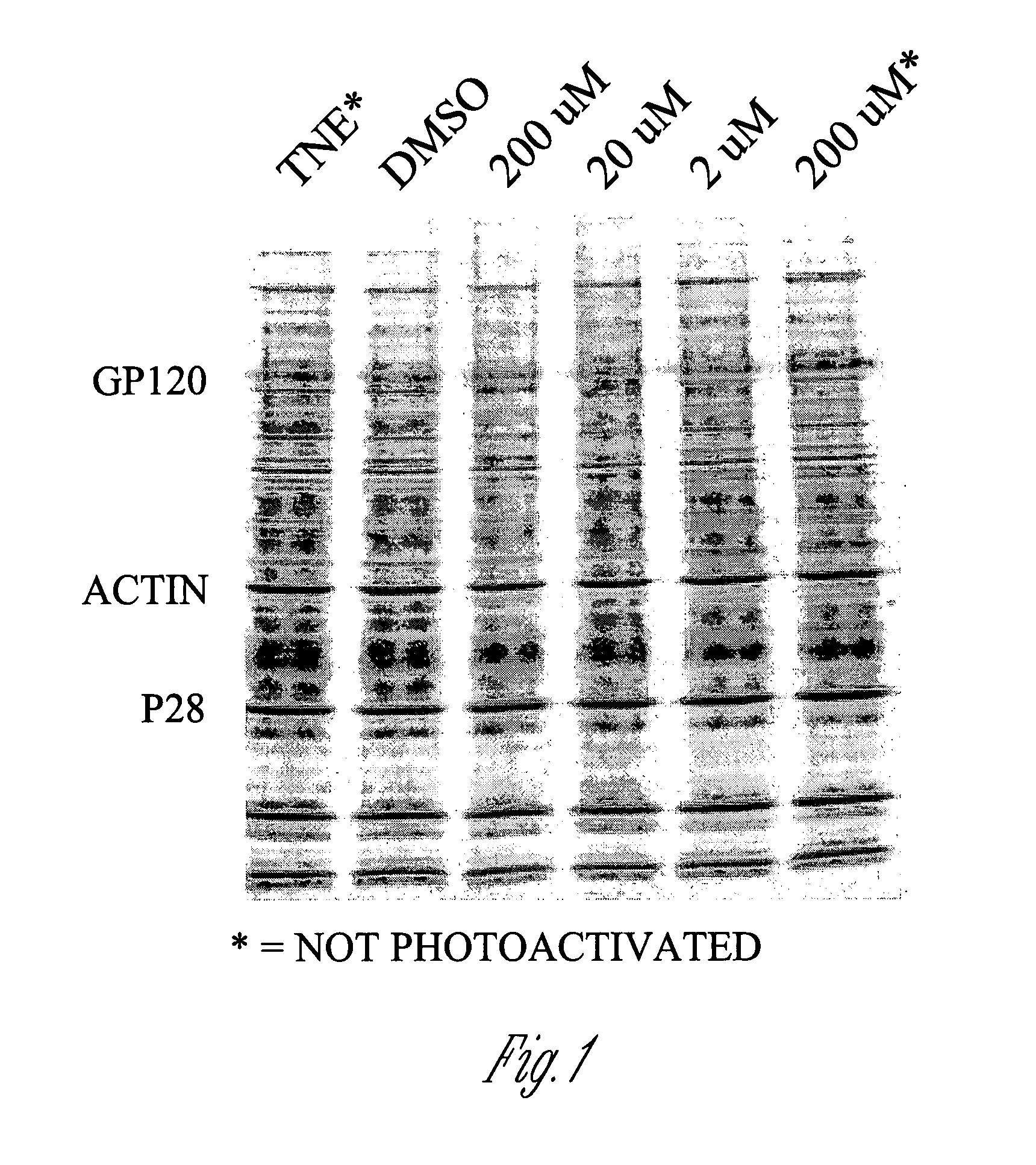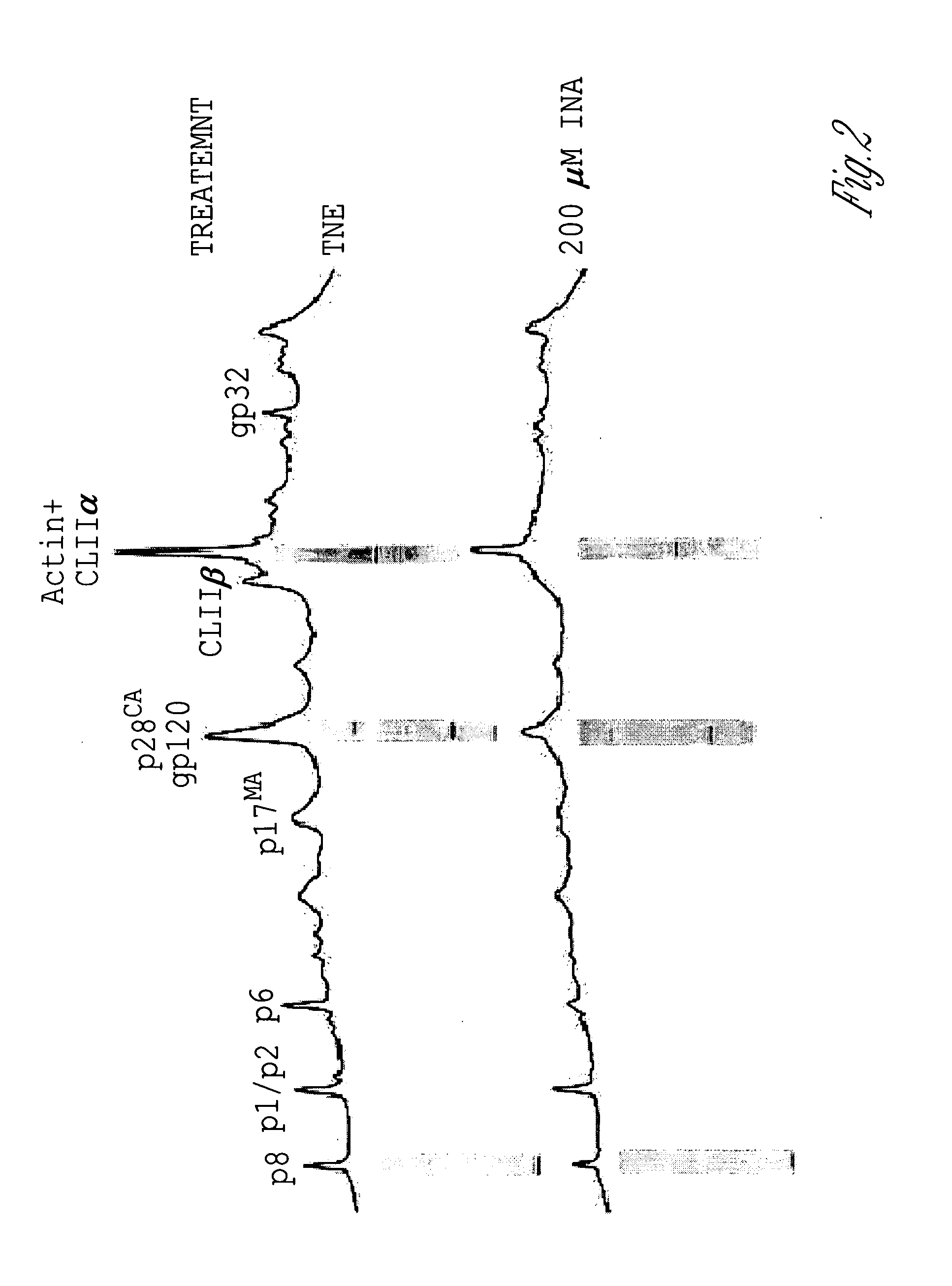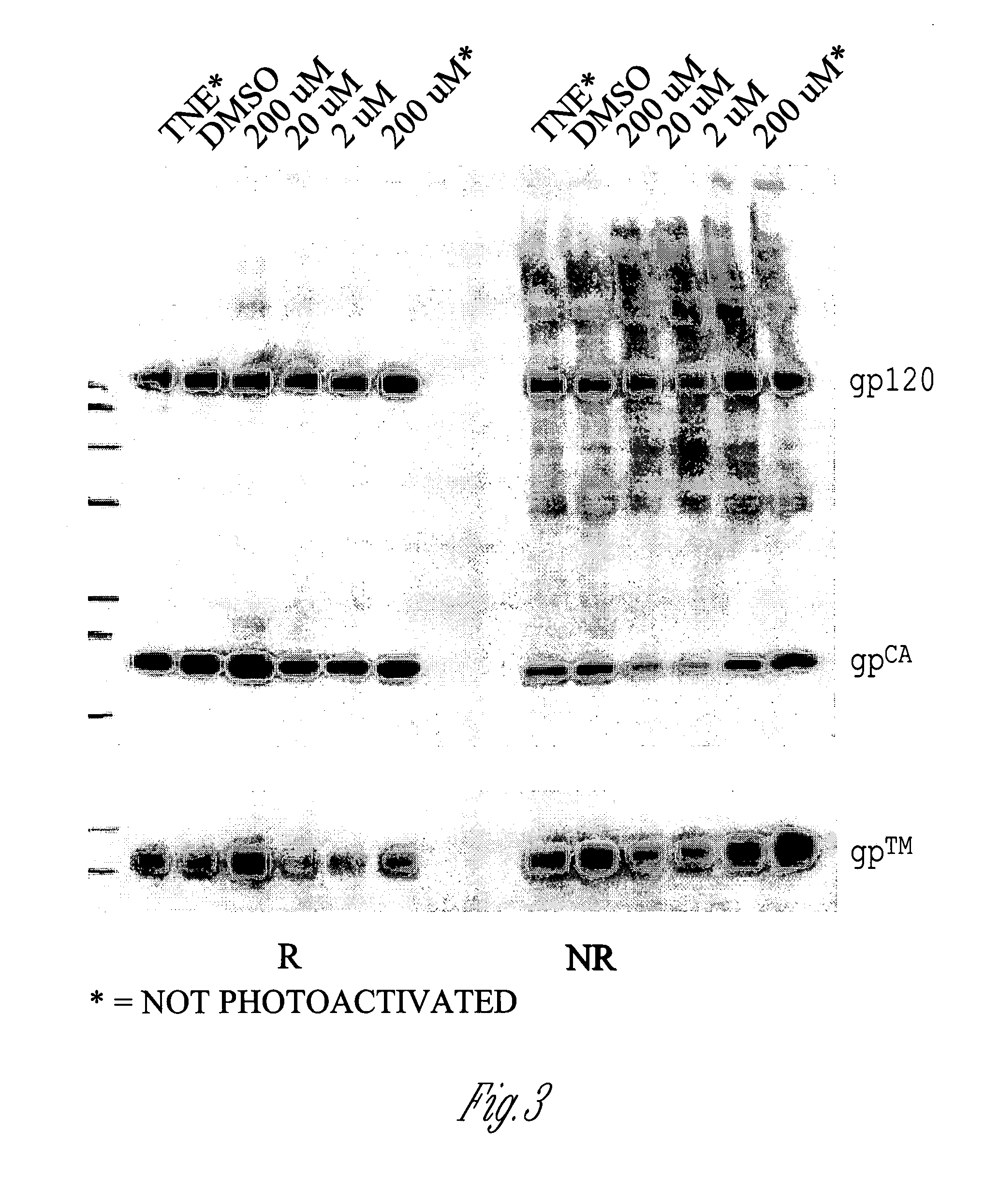Inactivated Influenza Virus Compositions
a technology of inactivated influenza viruses and compositions, applied in the field of universal inactivation of viruses, parasites and tumor cells, can solve the problems of ineffective use of inactivated or killed microbial agents as vaccines, inability to meet the needs of clinical trials, and inability to achieve the effects of ensuring safety, ensuring safety and ensuring safety
- Summary
- Abstract
- Description
- Claims
- Application Information
AI Technical Summary
Benefits of technology
Problems solved by technology
Method used
Image
Examples
example 1
Illustrative Materials and Methods
[0117]This Example provides many of the reagents and procedures employed for several experiments with SIV and / or HIV.
Materials and Methods
[0118]Antibodies and their sources were as follows: anti-HLA-DR IgG L243 (mAb from Elena Chertova), anti-HLA-DR IgG DA6-147 (mAb from Paul Roche), and anti-Gp32 IgG (rabbit polyclonal Ab from Raoul Benveniste). [125]INA (300 mCi / mmol) was purchased from Lofstrand Laboratories (Gaithersburg, Md.). All other biochemical reagents used were of the highest purity available and were obtained from regular commercial sources.
[0119]Viruses. HIV-1MN / H9 clone 4 was propagated in H9 cells, as described previously (Ott at al. 1995). SIVmne was obtained from supernatants of the cloned E11 S cell lines derived from a culture of HuT-78 cells infected with SIVmne (Benveniste at al. 1990). Concentrated virus preparations were produced by sucrose gradient banding in a continuous-flow centrifuge (Bess at al. 1997). Inactivation of SI...
example 2
INA-Treated SIV
Cannot Fuse with Mammalian Cells
[0131]This Example describes the results of experiments showing that INA treatment inactivates viruses but leaves them substantially intact. However, such treatment inhibits viral fusion with host cells and prevents viral infection.
[0132]FIG. 1 shows a Coomassie-stained SDS-PAGE gel illustrating that treatment of SIV virions with INA causes insubstantial changes in the molecular weights of viral proteins. As shown, exposure to INA at concentrations ranging from 2 μM to 200 μM caused substantially no change in the separation pattern of SIV proteins as compared to untreated virions (DMSO) and virions that were treated with either TNE (0.1 M Tris HCl, 0.1 M NaCl, 1 mM EDTA) or 200 μM INA but not exposed to light. Similar results were obtained when these experiments were repeated with HIV. These results indicate that INA treatment maintains the integrity of the majority of viral proteins.
[0133]However, as shown by reverse phase HPLC analysi...
example 3
INA-Treated HIV
Are Transcriptionally Inactive in Mammalian Cells
[0138]This Example describes the results of experiments showing that INA treatment inactivates human immunodeficiency viral transcription, thereby illustrating by another procedure that INA treatment inactivates HIV.
[0139]Infectivity assay was carried out using the luciferase reporter gene assay, essentially as described in Spenlehauer, C., Gordon, C., Trkola, A. and Moore, J. (2001) Virology 280, 292-300; and Wei, X., Decker, J., Liu, Z., Zhang, Z., Arani, R., Kilby, M., Saag, M., Wu, X., Shaw, G., and Kappes, J. (2002) Antimicrobial Agents and Chemotherapy, 46, 1896-1905.
[0140]Briefly, JC53BL cells were used that express the luciferase enzyme under the transcriptional control of HIV long terminal repeat (LTR). Upon HIV infection the TAT protein from the virus binds to the LTR to induce the expression of Luciferase. The level of Luciferase expression can be assessed by incubation of the sample with a luciferase substra...
PUM
| Property | Measurement | Unit |
|---|---|---|
| Fraction | aaaaa | aaaaa |
| Fraction | aaaaa | aaaaa |
| Angle | aaaaa | aaaaa |
Abstract
Description
Claims
Application Information
 Login to View More
Login to View More - R&D
- Intellectual Property
- Life Sciences
- Materials
- Tech Scout
- Unparalleled Data Quality
- Higher Quality Content
- 60% Fewer Hallucinations
Browse by: Latest US Patents, China's latest patents, Technical Efficacy Thesaurus, Application Domain, Technology Topic, Popular Technical Reports.
© 2025 PatSnap. All rights reserved.Legal|Privacy policy|Modern Slavery Act Transparency Statement|Sitemap|About US| Contact US: help@patsnap.com



